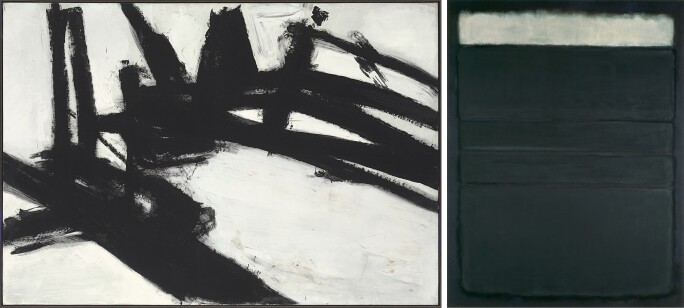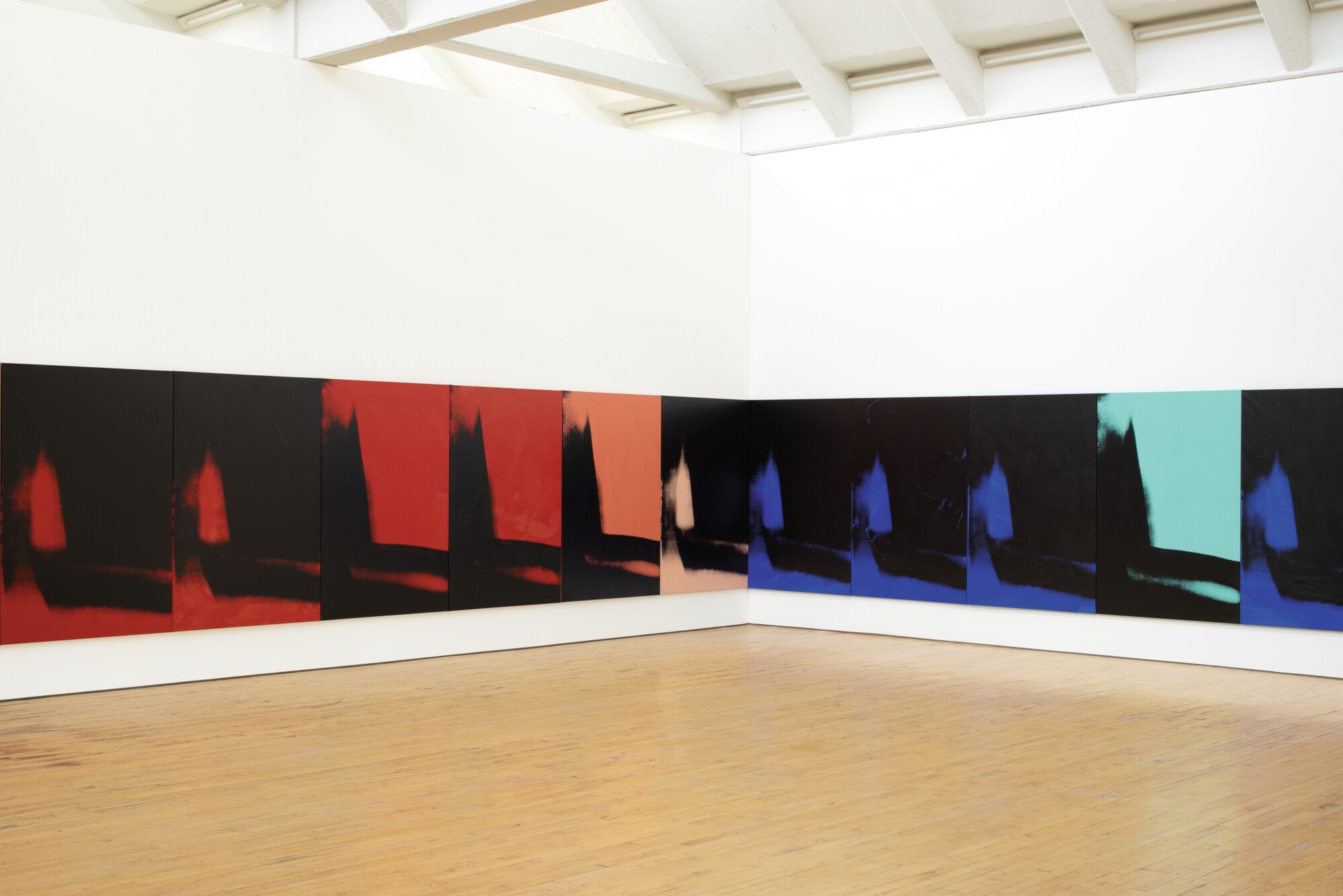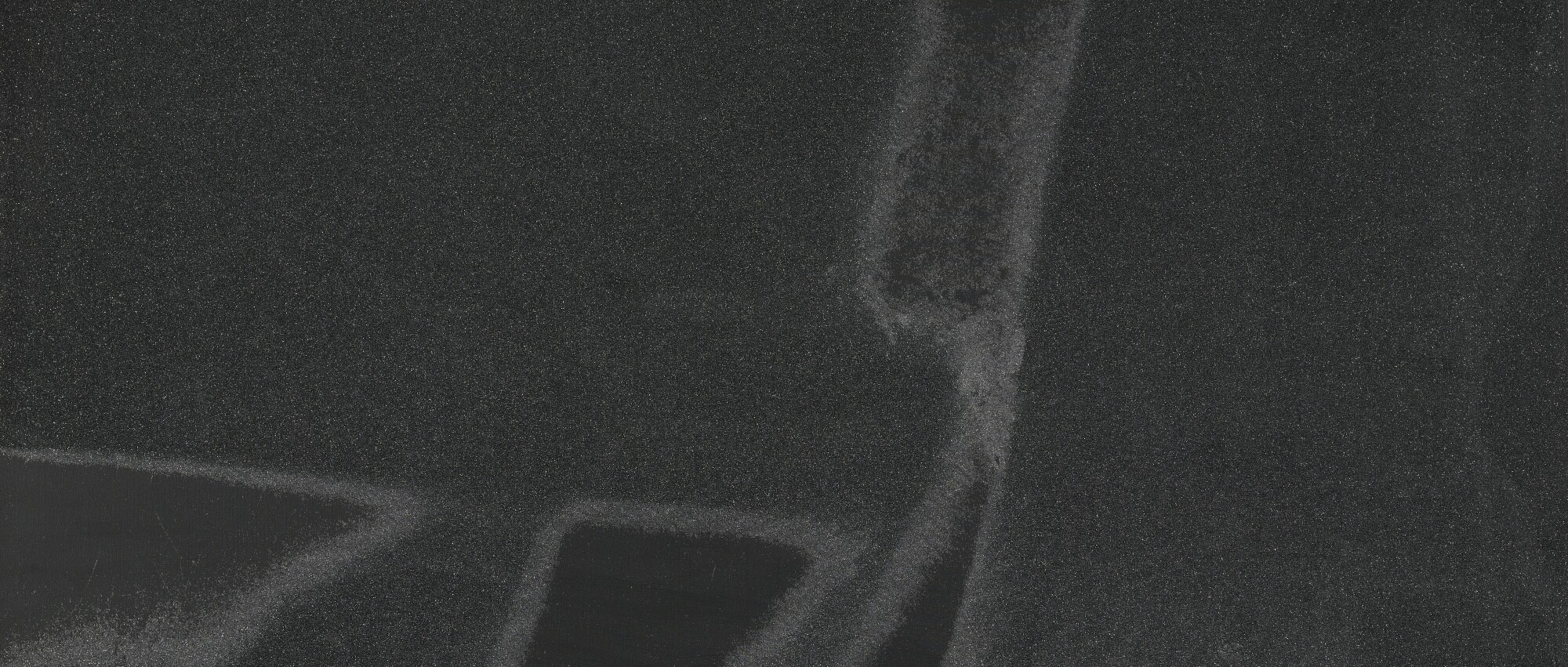
“No other painter has come close to this radicality of gesture and self-denial… These paintings hover as the shadow of life’s edge. These paintings are Andy Warhol’s touch, his distance… All of the images of Andy’s paintings have passed through the shadow and light of these paintings, bolstering up and heralding in this vision of the existential.”
Created circa 1979, Andy Warhol’s enigmatic Diamond dust shadows marked a seismic shift in the artist’s practice. In this series, Warhol delved into radical new territories in abstraction, eschewing the cultural icons and commodity symbols that dominated his practice in the previous decade. Based on photographs taken in Warhol’s famed Factory studio, the Shadow series form an elegant and conceptually rigorous extension of Warhol’s explorations into the power of images, iconic symbols and seriality. Warhol selected the images for the series from Polaroids shot by his studio assistant Ronnie Cutrone, who created miniature sets comprising stage-lit matte boards and sheets of cardboard constructed to project dramatic, angular shadows. Enlarged to a monumental scale, the resulting canvases are as mesmerising as they are mysterious. In the present work, the shadow appears as a ripple across a strikingly dramatic monochromatic surface, glimmering with the intense luminosity of nightfall. With the addition of sparkling diamond dust, the image evokes all the glitz and glamour of Warhol’s world of celebrity images and Pop icons.

(Right) Mark Rothko, Untitled (White, Blacks, Grays on Maroon), 1963, Kunsthaus Zürich, Zurich. Image: © Kunsthaus Zürich. Artwork: © 1998 Kate Rothko Prizel & Christopher Rothko ARS, NY and DACS, London.
Throughout the 1960s, Warhol mobilised the shadow as a tool to mystify and obscure his silkscreened icons, harnessing its associated symbolism to enhance a reading of transience and mortality. Used as a subject in its own right by the late 1970s, its metaphoric portent offered the perfect means by which Warhol could empty his canvases and telescope the inherent seriality at the core of his practice. Originally conceived as a single monumental work, the initial paintings in this series comprise an expansive 102 canvases in 17 different colour ways; an installation that today resides in the collection of the Dia Art Foundation. Installed without gaps between each work, the Dia series acts like the refrain of a song or the appearance of a film reel, a continuous and spooling image spanning an almost limitless space. In her essay for the 2002 Tate Modern Warhol retrospective, curator Donna De Salvo extolled the series’ resonant content: “The Shadows have been discussed as existential statements, as everything and nothing, as something fleeting, changeable and as intangible as real shadows. They have also been characterised as commentary on the very act of painting” (D. De Salvo, ‘Afterimage’, in: Exh. Cat., London, Tate Modern, Andy Warhol Retrospective, 2002, p. 50).

Occupying the epicentre of Warhol’s mature practice, the Shadows teeter delicately between the realms of abstraction and representation. Inherently, shadows are an ephemeral replication of a physical object, yet here, decontextualised and sweeping across the canvas, they appear almost akin to the gestural brushstrokes of the Abstract Expressionists. Warhol certainly engaged with these artistic associations; the subject matter of these works calling to mind the heavy chiaroscuro of Baroque masterpieces, while the sleek monochrome and reductive formalism of the paintings recalls the Supremativism of Malevich or Minimalism of Robert Ryman. Combined with the mechanical reproduction of Warhol’s trademark screening technique, the paintings adopt a rich spectrum of art historical connotations.

Oscillating between the abstraction of the image and the ephemeral effect of the medium, the Diamond Dust Shadows embody a myriad of Warholian tropes: the glitter of glamour and money, the radiance of religion, the complexity of perception within image repetition, and indeed the nature of painting itself. In 1989, Julian Schnabel perfectly elucidated the significance of the Diamond dust shadows: “No other painter has come close to this radicality of gesture and self-denial… These paintings hover as the shadow of life’s edge. These paintings are Andy Warhol’s touch, his distance… All of the images of Andy’s paintings have passed through the shadow and light of these paintings, bolstering up and heralding in this vision of the existential” (J. Schnabel, ‘Shadow Paintings’ in Exh. Cat., New York, Gagosian Gallery, Andy Warhol: Shadow Paintings, 1989).
CALVIN KLEIN x Dia Art Foundation: Andy Warhol ‘Shadows’ (1978-79)
-
 Sotheby's StoriesHow Jane Birkin's Original Hermès Birkin Bag Made History... Again | A Sotheby's Auction Story
Sotheby's StoriesHow Jane Birkin's Original Hermès Birkin Bag Made History... Again | A Sotheby's Auction Story -
 Handbags & FashionJane Birkin's Original Hermès Birkin Bag Shatters Auction Records at $10.1 Million | Sotheby's
Handbags & FashionJane Birkin's Original Hermès Birkin Bag Shatters Auction Records at $10.1 Million | Sotheby's -
 Geek WeekA 54-Pound Martian Meteorite Just Landed at Sotheby's — But How Did It Get Here?
Geek WeekA 54-Pound Martian Meteorite Just Landed at Sotheby's — But How Did It Get Here?


